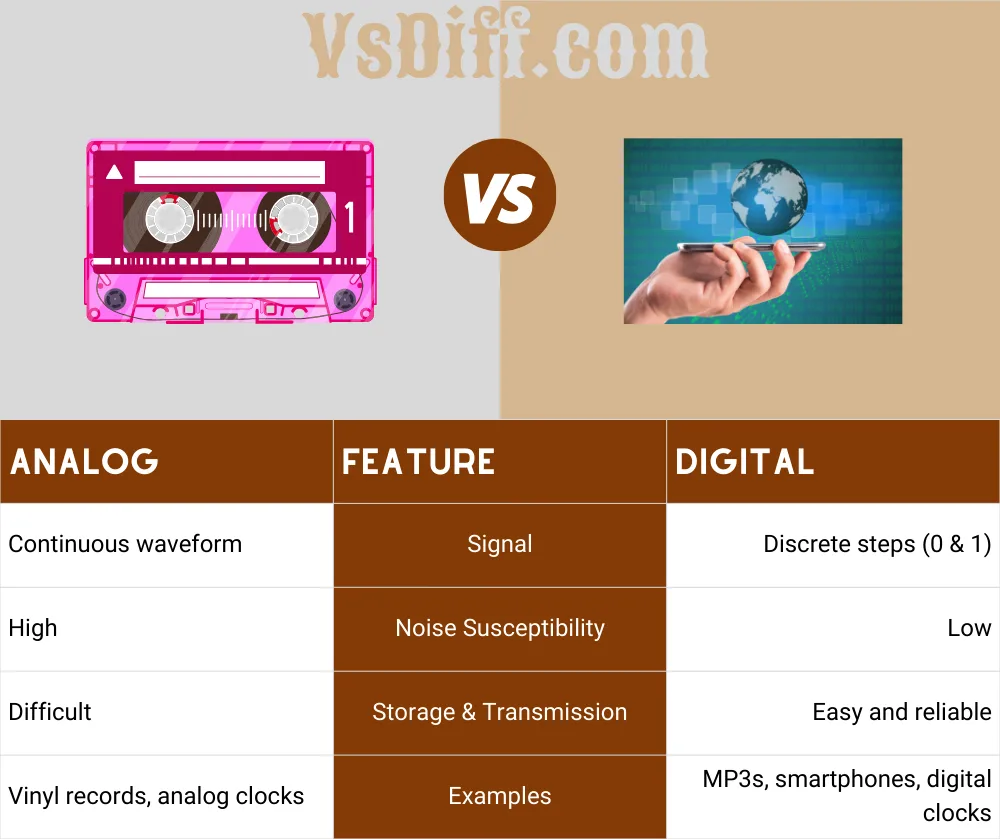
Analog vs Digital: Interactive Comparison
Explore the difference between analog and digital signals with interactive visuals. Move the slider to compare waveforms and understand how analog and digital systems work.
Analog signal
Comparison Table
| Feature | Analog | Digital |
|---|---|---|
| Signal | Continuous waveform | Discrete steps (0 & 1) |
| Noise Susceptibility | High | Low |
| Storage & Transmission | Difficult | Easy and reliable |
| Examples | Vinyl records, analog clocks | MP3s, smartphones, digital clocks |
This interactive slider lets you see the transition from smooth analog waves to blocky digital waves, giving a clear visual understanding of their differences.
Analog vs Digital: Understanding the Key Differences
In our modern world, everything seems to be digital. Yet, analog technology still plays a crucial role in many areas. Understanding the differences between analog and digital systems can help you make informed choices in electronics, audio, and communication.
What is Analog?
Analog signals are continuous and vary smoothly over time. They represent information in a form that is analogous to the real-world phenomenon they describe. Examples include:
- Traditional vinyl records producing sound waves.
- Analog clocks with moving hands.
- Old-fashioned thermometers with mercury.
What is Digital?
Digital signals are discrete, representing information using binary code (0s and 1s). They are less susceptible to noise and easier to store or transmit. Examples include:
- MP3 music files or streaming services.
- Digital watches and smartwatches.
- Computers and smartphones processing data.
Real-Life Applications
- Music: Analog vinyl vs digital streaming.
- Timekeeping: Classic watches vs smartwatches.
- Photography: Film cameras vs digital cameras.
- Communication: Old telephones vs VoIP and messaging apps.
FAQ
Here are some frequently asked questions about analog vs digital technology:
- Q: Can analog and digital systems coexist?
A: Yes, many devices use both analog and digital technologies to achieve the best performance. - Q: Which is better for audio quality?
A: Analog audio has a warmer sound, while digital audio provides clarity and low noise. Preferences vary among listeners. - Q: Are digital devices replacing analog completely?
A: Not entirely. Analog technology is still valuable in many applications, including audio, measurement instruments, and retro devices.
This comparison helps you understand the strengths and weaknesses of both analog and digital systems in everyday life.